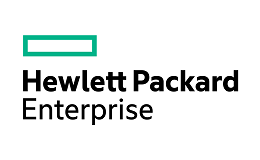Is HPE A Buy Below $10?
Despite almost 22.3% growth in Hewlett Packard Enterprise (NYSE: HPE) stock since hitting a low of $7.83 on March 23, as compared to the 27% growth in the S&P 500, we believe HPE still has significant upside potential. Why is that? The key is the company’s stock is still about 40% lower than it was at the beginning of 2020 and 34% lower than it was at the end of 2018. Our dashboard ‘What Factors Drove -30.4% Change In HPE’s Stock Between 2018 And Now?‘ provides the key numbers behind our thinking and we explain more below.
- Will A Covid Recession Affect HPE’s Survival?
- Is Benefitfocus Expensive At $11?
- Coronavirus Recovery Watch: HP Enterprise Stock Gained 14% Last Week, But Is Still ~40% YTD
- HP Enterprise’s Fortunes Declined In Fiscal Q2, But Strategic Partnerships, Cray Acquisition Should Drive Growth
- Did HP Enterprise Lose Ground To Cloud Competitors In Fiscal Q2?
- What Is HP Enterprise’s Revenue Breakdown?
The EPS fell in FY 2019 (ended Oct 2019) primarily as the company didn’t receive a benefit in Income tax as they did in 2018. The Net Income margin fell from 6.2% to 3.6%, as a result of which the net income figure fell from $1.9 billion in FY 2018 to $1 billion in FY 2019. This was helped by a 5.6% decrease in HPE’s revenues from FY 2018 to FY 2019. Though the fall was partially offset by a decrease of 7% in shares outstanding.
The stock price rise from $14.52 at the end of FY 2018 (ended Oct 2018) to $16.11 at the end of FY 2019 benefited from an increase in HPE’s P/E multiple, which grew from 11x at the end of Oct 2018 to 20.7x at the end of Oct 2019. The multiple has decreased to 12.3x currently which reflects a 11.7% increase from Oct 2018 to May 2020. Further, the decline in P/E multiple in 2020 is due to the impact of coronavirus, which we explain below.
Effect of Coronavirus
The global spread of coronavirus has led to lockdown in various cities across the globe, which has affected industrial and economic activity. This is likely to adversely affect consumption and consumer spending. HPE’s stock is down by about 32.8% since January 31 after the World Health Organization (WHO) declared a global health emergency in light of the spread of coronavirus. However, during the same period, the S&P 500 index saw a decline of about 11.7%. Moreover, about 70% of HPE’s total revenue comes from the US and Europe region which are worst impacted by the outbreak. The demand for HPE’s services has fallen in the short term as the customers focus on their core expenses till things get clear. This is bound to hurt HPE’s revenues.
We believe HPE’s Q2 2020 (ended April 2020) results will confirm the trend in revenues. It is also likely to accompany a clearer Q3 as well as FY’20 guidance. However, if there are signs of abatement of the crisis by the time Q2 results are announced, the company’s stock could see a good upturn. With a 31.2% fall in its stock price since January 31, 2020, HPE has under performed IBM (-15.7%) and the S&P 500 (-10.7%). In the current scenario, we believe HPE’s stock is likely to remain around its current levels, with a good upside post coronavirus.
View our dashboard analysis Coronavirus Trends Across Countries, And What It Means For The U.S. for the current rate of coronavirus spread in the U.S. and forecasts on where it could be headed, based on comparison with other countries. Our dashboard -28% Coronavirus crash vs 4 Historic crashes builds a more complete macro picture of historic crashes and how the sell-off during early March compares.
HPE has seen a fall in this uncertain times but Salesforce has seen an upturn, Find out why has Salesforce’s share price has seen an upturn in recent weeks.
See all Trefis Price Estimates and Download Trefis Data here
What’s behind Trefis? See How It’s Powering New Collaboration and What-Ifs For CFOs and Finance Teams | Product, R&D, and Marketing Teams

